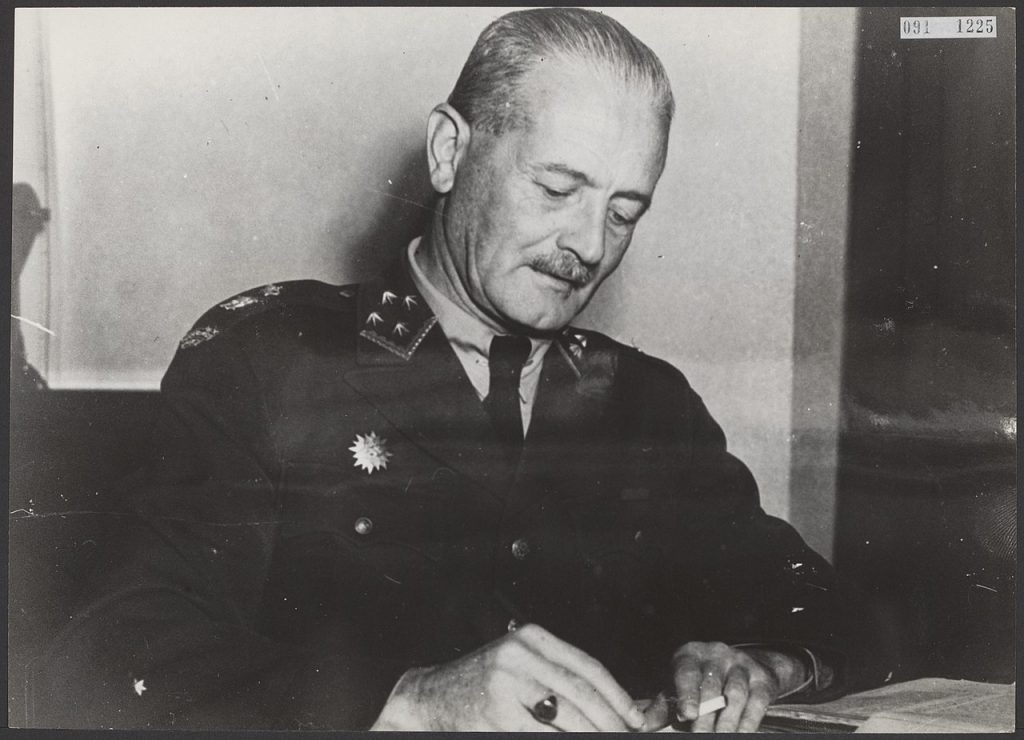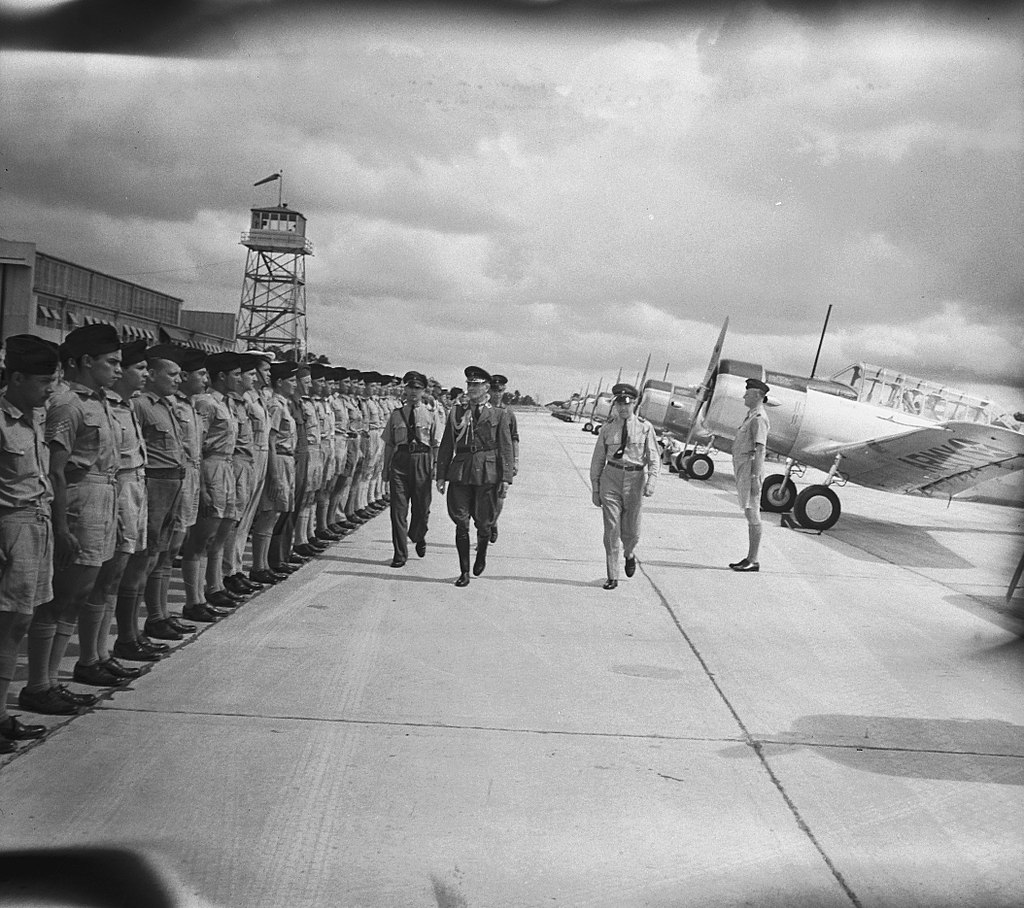
Ludolph Hendrik van Oyen was a distinguished Dutch military officer who played a vital role in the defence and rebuilding of Dutch forces during World War II.
Early Military Career:
Ludolph Hendrik van Oyen embarked on his military journey at the cadet school in Alkmaar in 1906. From 1906 to 1911, he further honed his skills at the Royal Military Academy in Breda. After several promotions, including his rank as a captain, Van Oyen attended the Hoogere Krijgsschool in The Hague from 1922 to 1925. His leadership abilities and dedication to his duties led to his appointment as major and commander of the LA-KNIL (Luchtvaartafdeling-Koninklijk Nederlands Indisch Leger). Reporting to Lieutenant General Hein ter Poorten the Commander-in-Chief of the Royal Netherlands East Indies Army (KNIL) before and during the Japanese invasion. He led the KNIL’s defense against the Japanese forces/
Expanding the ML-KNIL and Role in ABDACOM:
Van Oyen’s leadership capabilities were evident as he expanded and strengthened the ML-KNIL in anticipation of the Japanese advance at the outbreak of the war. In 1942, he was appointed as the deputy commander to Vice Marshal Sir Richard Peirse, overseeing the air forces within ABDACOM. ABDACOM was a collaborative effort between the American, British, Dutch, and Australian armed forces, established on February 25, 1942, under the command of General Sir Archibald Wavell. However, due to changing circumstances, the ABDACOM collaboration was later cancelled.
Flight Training and Rebuilding Efforts:

Following the Battle of the Java Sea and the Japanese invasion of Java, Van Oyen, along with other Dutch officials, including Lieutenant Governor General Hubertus van Mook, fled to Australia. General Major van Oyen was the highest ranking military commander in Australia. Lieutenant General Hein ter Poorten was ordered by the Dutch Government to stay in the NEI and was eventually captured and became a prisoner of war. His capture led to the command being transferred to Major General van Oyen.
For unclear reasons van Oyen as well as other senior personnel were ordered to move to the USA in April 1942 to set up the Dutch Military Flying School on Jackson, Mississippi. This left a gaping hole in the military top who were need for the active war effort. It was not until November 1943 before van Oyen came back to Australia and resumed his position as the Commander of all Dutch Forces in Australia.
Rebuilding the Dutch East Indies Army:
In November 1943, van Oyen was promoted to the rank of Lieutenant General and assumed the role of Acting Army Commander of the Dutch East Indies Army, reporting to the Commander of the Dutch Forces in the East (BSO) Lieutenant Admiral Conrad Helfrich in Ceylon. This appointment came after Lieutenant General ter Poorten was taken prisoner by the Japanese. Van Oyen’s primary objective was to rebuild the Dutch armed forces in preparation for a potential Japanese capitulation.
Advocating Dutch Authority and Discharge:
After the recapture of the Dutch East Indies in 1945, Van Oyen, along with Navy Commander Conrad Helfrich, sought to convince the British to restore Dutch authority and suppress Sukarno and the newly proclaimed Republic of Indonesia. However, the British, led by Lord Mountbatten and Batavia’s commander, Philip Christison, declined their requests. As a final resort, Van Oyen offered his resignation, which was accepted. He was succeeded by General Spoor, whose views aligned closely with those of Van Oyen. In January 1946, Van Oyen was honourably discharged.
Later Life and Honours:
Following his military career, Ludolph Hendrik van Oyen remained dedicated to public service as the commander of the Red Cross Corps until his passing in 1953. He received several distinguished honours for his contributions, including the Knight of the Order of the Netherlands Lion, Officer of the Order of Orange-Nassau, Member of the Order of the Bath, Commander of the Order of Merit, and the 5th Class Silver Cross of the Order of Virtuti Militari (Poland).
